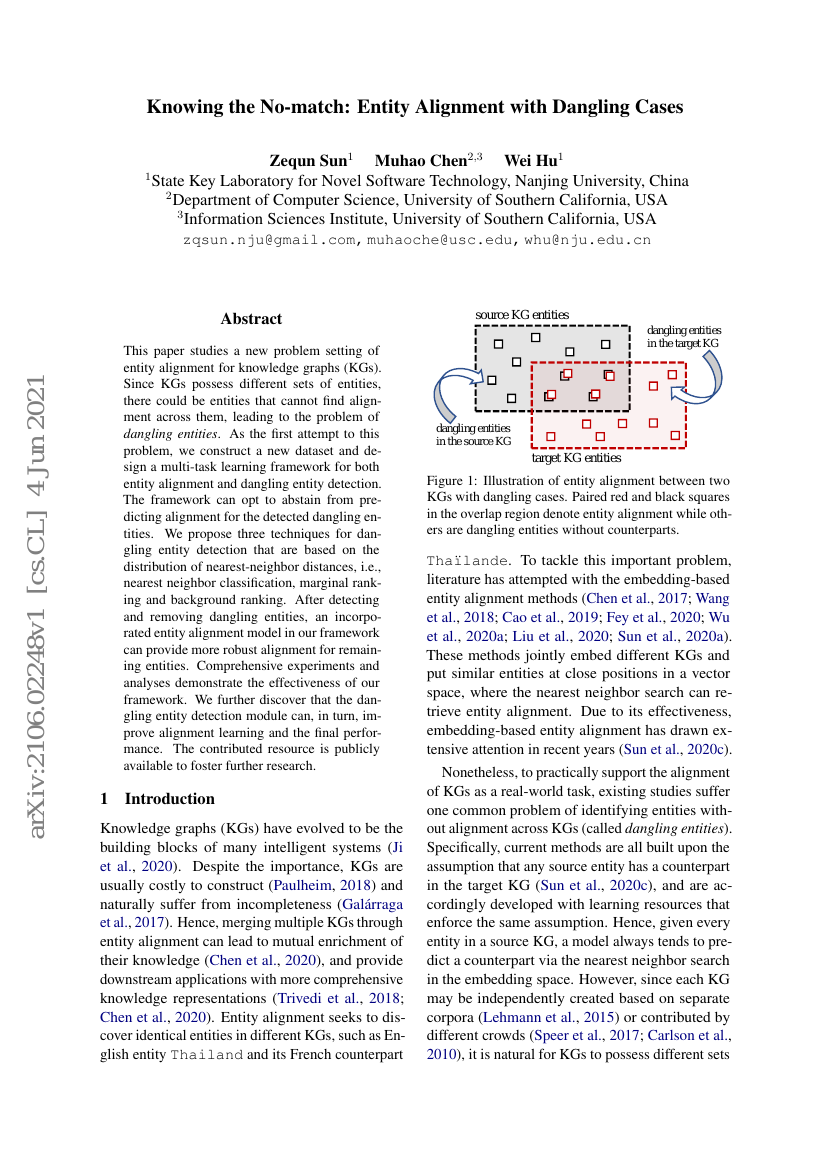Command Palette
Search for a command to run...
Zequn Sun Muhao Chen Wei Hu

Abstract
This paper studies a new problem setting of entity alignment for knowledge graphs (KGs). Since KGs possess different sets of entities, there could be entities that cannot find alignment across them, leading to the problem of dangling entities. As the first attempt to this problem, we construct a new dataset and design a multi-task learning framework for both entity alignment and dangling entity detection. The framework can opt to abstain from predicting alignment for the detected dangling entities. We propose three techniques for dangling entity detection that are based on the distribution of nearest-neighbor distances, i.e., nearest neighbor classification, marginal ranking and background ranking. After detecting and removing dangling entities, an incorporated entity alignment model in our framework can provide more robust alignment for remaining entities. Comprehensive experiments and analyses demonstrate the effectiveness of our framework. We further discover that the dangling entity detection module can, in turn, improve alignment learning and the final performance. The contributed resource is publicly available to foster further research.
Code Repositories
Benchmarks
| Benchmark | Methodology | Metrics |
|---|---|---|
| entity-alignment-on-dbp2-0-zh-en | MTransE w/ background ranking | Entity Alignment (Consolidated) F1: 0.335 dangling entity detection F1: 0.767 |
| entity-alignment-on-dbp2-0-zh-en | AliNet w/ background ranking | Entity Alignment (Consolidated) F1: 0.238 dangling entity detection F1: 0.643 |
Build AI with AI
From idea to launch — accelerate your AI development with free AI co-coding, out-of-the-box environment and best price of GPUs.